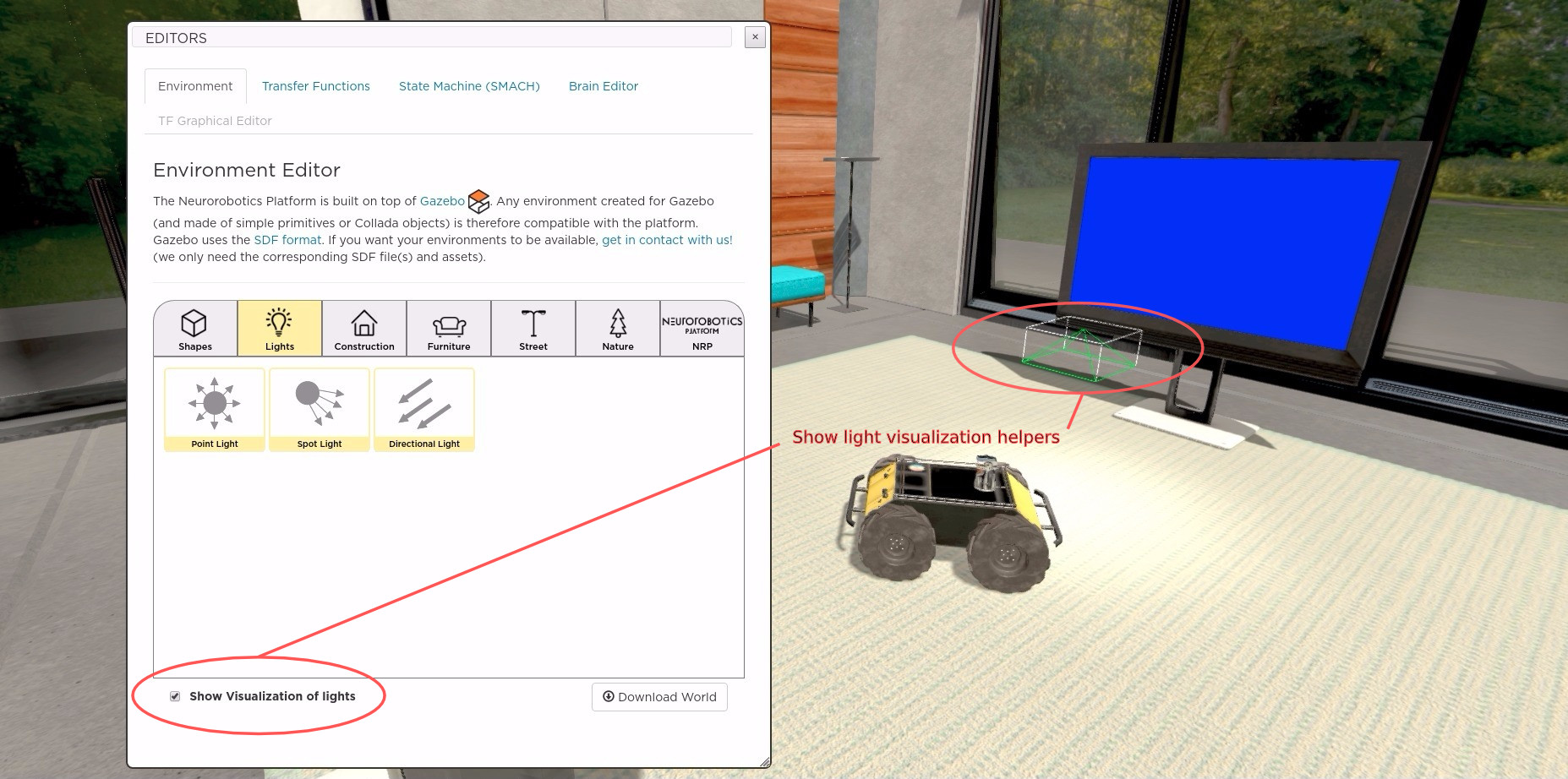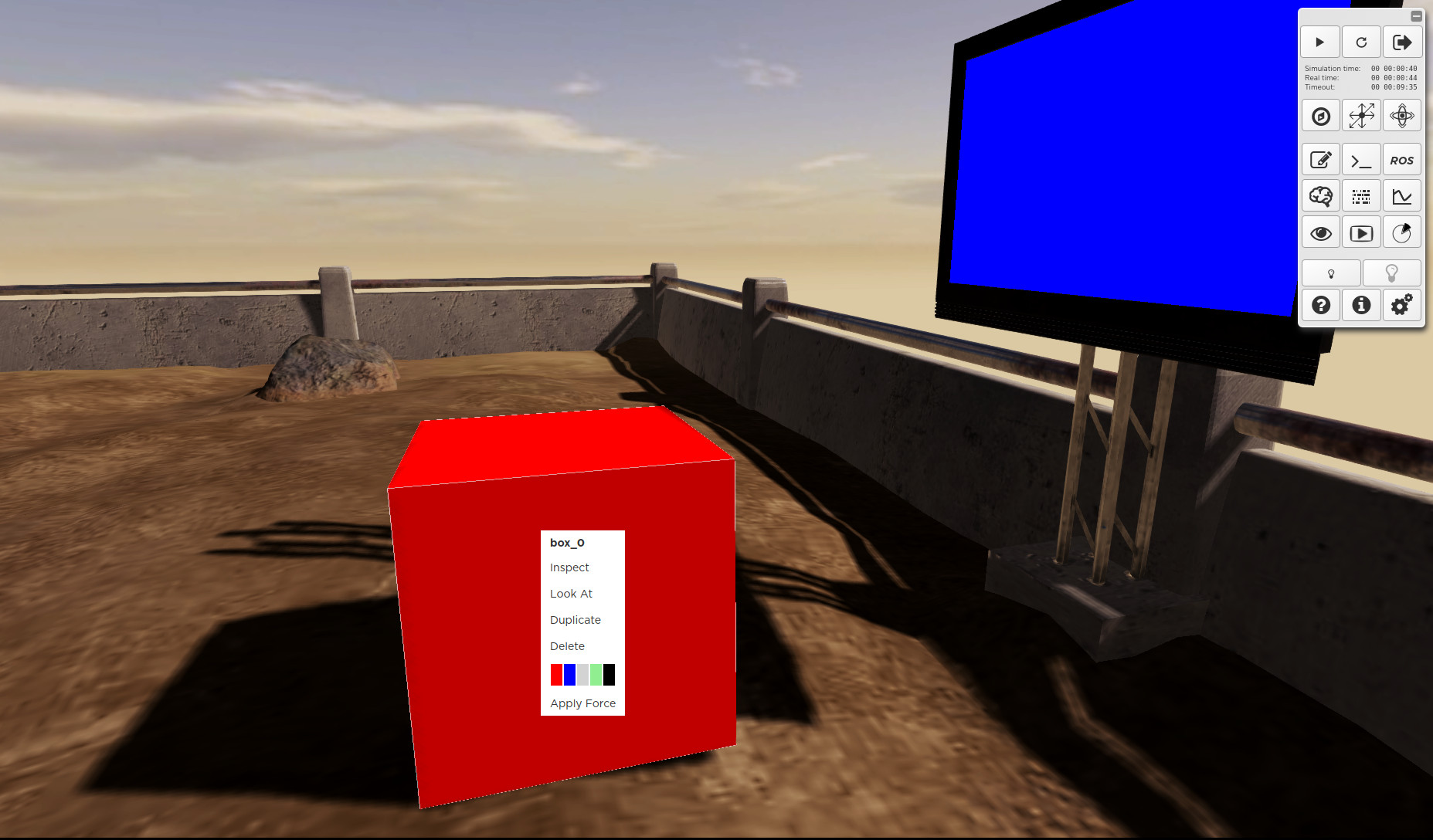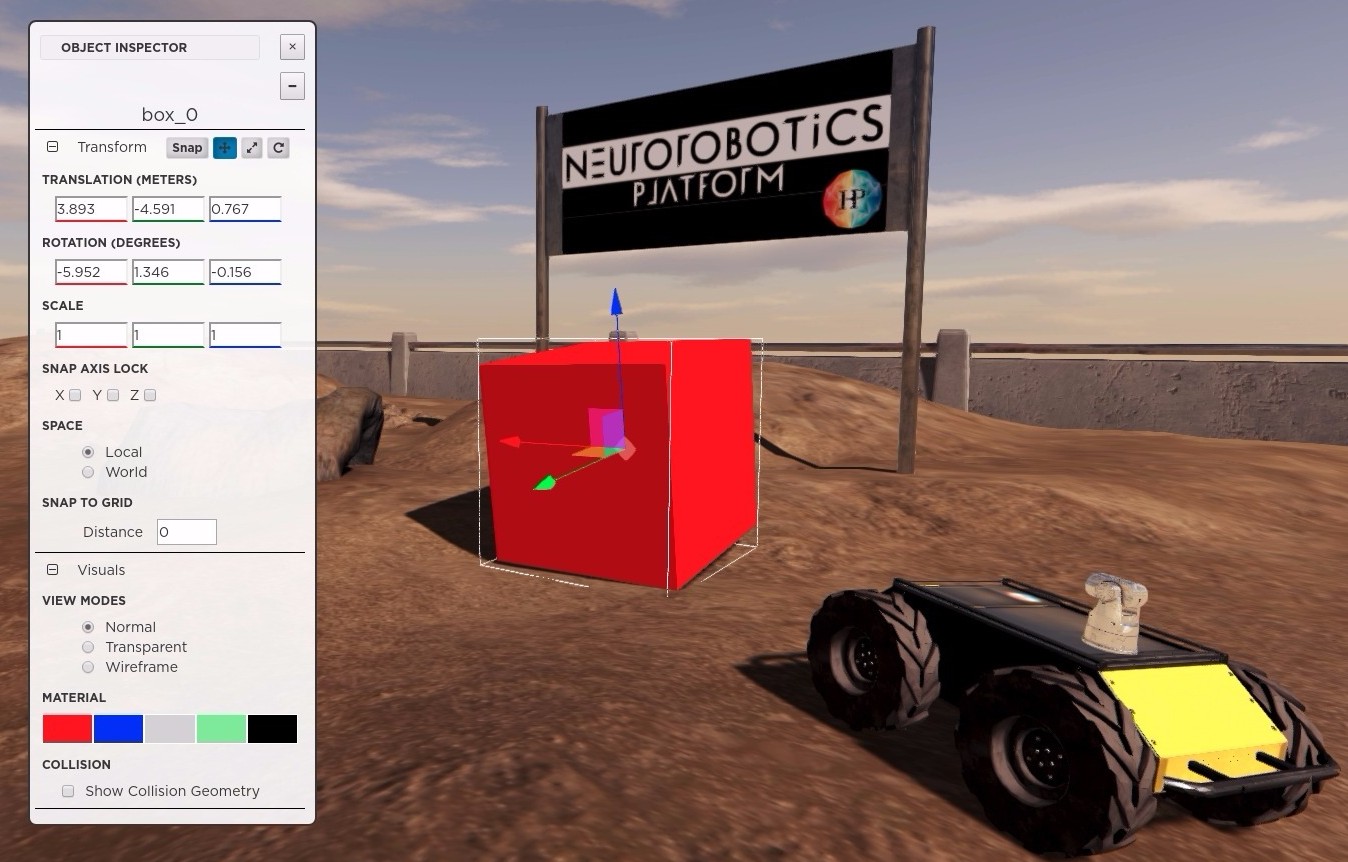Edit the environment¶
Add Objects and Lights¶
It is possible to add objects in the environment by clicking on their icon. The objects are grouped in color-coded categories.
When clicking on a category, the thumbnails of the objects belonging to it are added to the object list.
For example, in the picture below the Shapes and Furniture categories are selected and a cube has been added to the environment.
The Download World button downloads the environment in a file that you can edit. This is useful if you want to have multiple versions of the environment for this experiment. If you want to make your changes permanent, the relative files have to be saved to the storage.

Three types of Lights available; they are shown by selecting the Light category.
Lights can be visualized, in the scene, by green wire-frame shapes checking the Show Visualization of Lights box in. This allows the user to easily interact with them and also gives an idea about their orientation. Note that the lights positions are saved but not the light intensity that you set using the buttons in the toolbar.

Object inspector¶
Right-clicking on an object will result in a contextual menu appearing.
Inspect opens the Object Inspector.
Look At fixes the camera on the object. Moving it will make it pivot around the object.
Duplicate clones the selected object. The clone can be then freely placed in the scene.
Delete deletes the selected object. Pressing the Delete keyboard button has the same effect.

The top of the Object Inspector (OI) always shows the Name of the selected model.
The OI is divided in two sections: Transform and Visuals.
Transform contains the tools useful to manipulate and transform the scene:
Snap button: toggle the snap mode for object manipulation. It’s also possible to activate snap locks on the three axes and input the snapping distance from the objects
Translate button: toggle it on and drag the manipulators on the object itself
Translation inputs to set absolute positions
Scale button: toggle it on and drag the manipulators on the object itself
Scaling inputs to set absolute scaling values
Rotate button: toggle it on and drag the circles on the object itself
Rotation inputs to set absolute angles
Toggle between local and world Space
Visualize tools allow the user to alter the visualization of the scene:
Color picker for changing the color of objects that supports it
Radio buttons to switch the View Mode between Normal, Transparent and Wireframe
Display Collision geometries. This can be particularly useful to understand how the object collides with others
